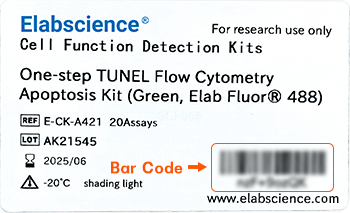SARS-CoV-2 Neutralization Antibody ELISA Kit(Quantitative) (E-EL-E608)

For research use only.
| Sensitivity | 9.38 ng/mL |
| Detection Range | 15.63-500 ng/mL |
| Sample Volume | 50 μL |
| Total Assay Time | 1 h 30 min |
| Reactivity | Human |
| Specificity | This kit recognizes Human SARS-CoV-2 Neutralization Antibody in samples.No significant cross-reactivity or interference between Human SARS-CoV-2 Neutralization Antibody and analogues was observed |
| Recovery | 80%-120% |
| Sample Type | serum, plasma |
| Detection Method | Colorimetric method, ELISA, Competitive |
| Assay Type | Competitive-ELISA |
| Size | 96T |
| Storage | 2-8℃ |
| Expiration Date | 12 months |
| Gene ID | 43740568 |
| Uniport ID | P0DTC2 |
| Research Area | SARS-CoV-2 , COVID 19 |
Other Clones
{{antibodyDetailsPage.numTotal}} Results
-
{{item.title}}
Citations ({{item.publications_count}}) Manual MSDS
Cat.No.:{{item.cat}}
{{index}} {{goods_show_value}}
Other Formats
{{formatDetailsPage.numTotal}} Results
-
{{item.title}}
Citations ({{item.publications_count}}) Manual MSDS
Cat.No.:{{item.cat}}
{{index}} {{goods_show_value}}
-
IF:{{item.impact}}
Journal:{{item.journal}} ({{item.year}})
DOI:{{item.doi}}Reactivity:{{item.species}}
Sample Type:{{item.sample_type}}
-
Q{{(FAQpage.currentPage - 1)*pageSize+index+1}}:{{item.name}}





